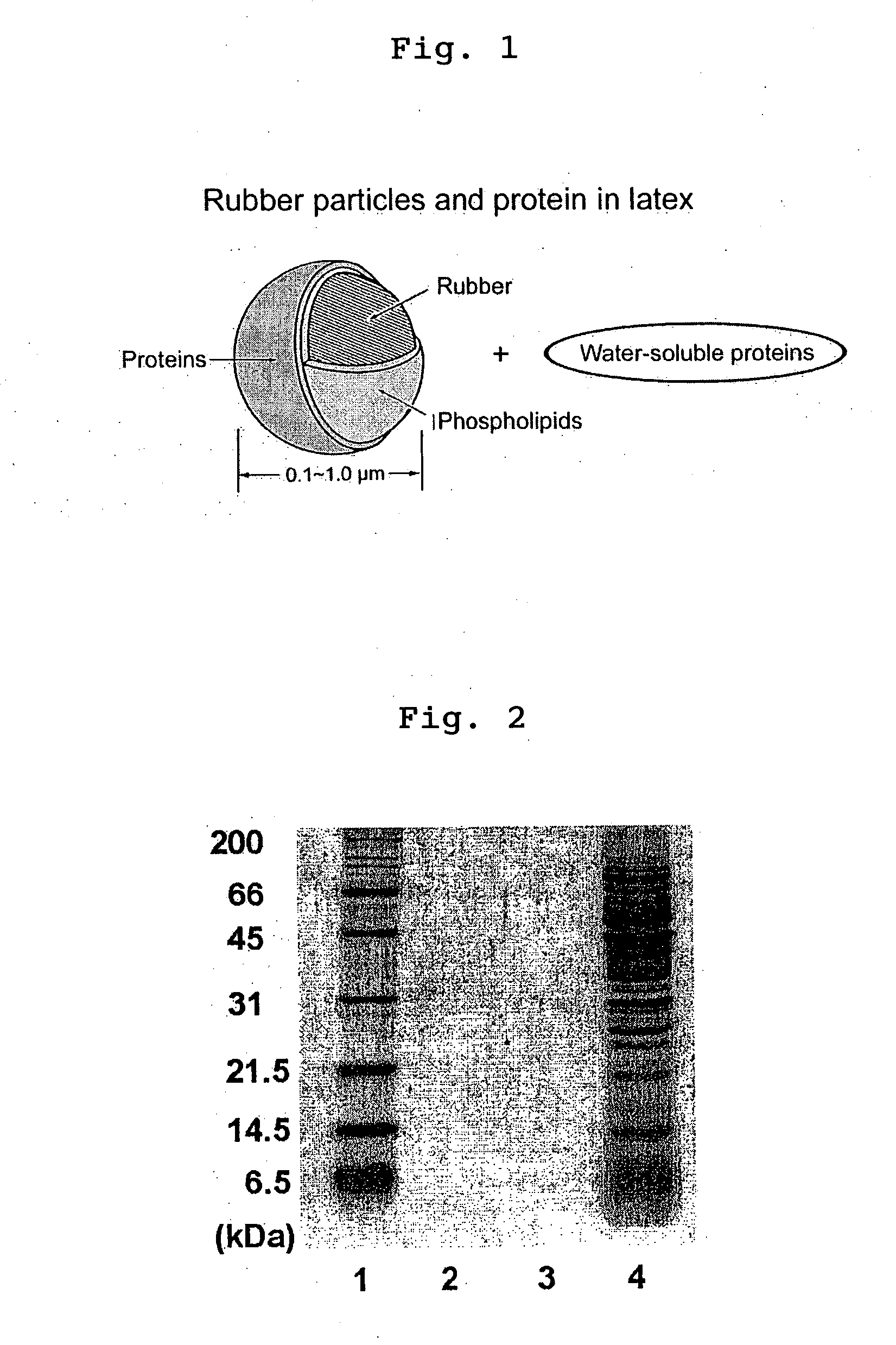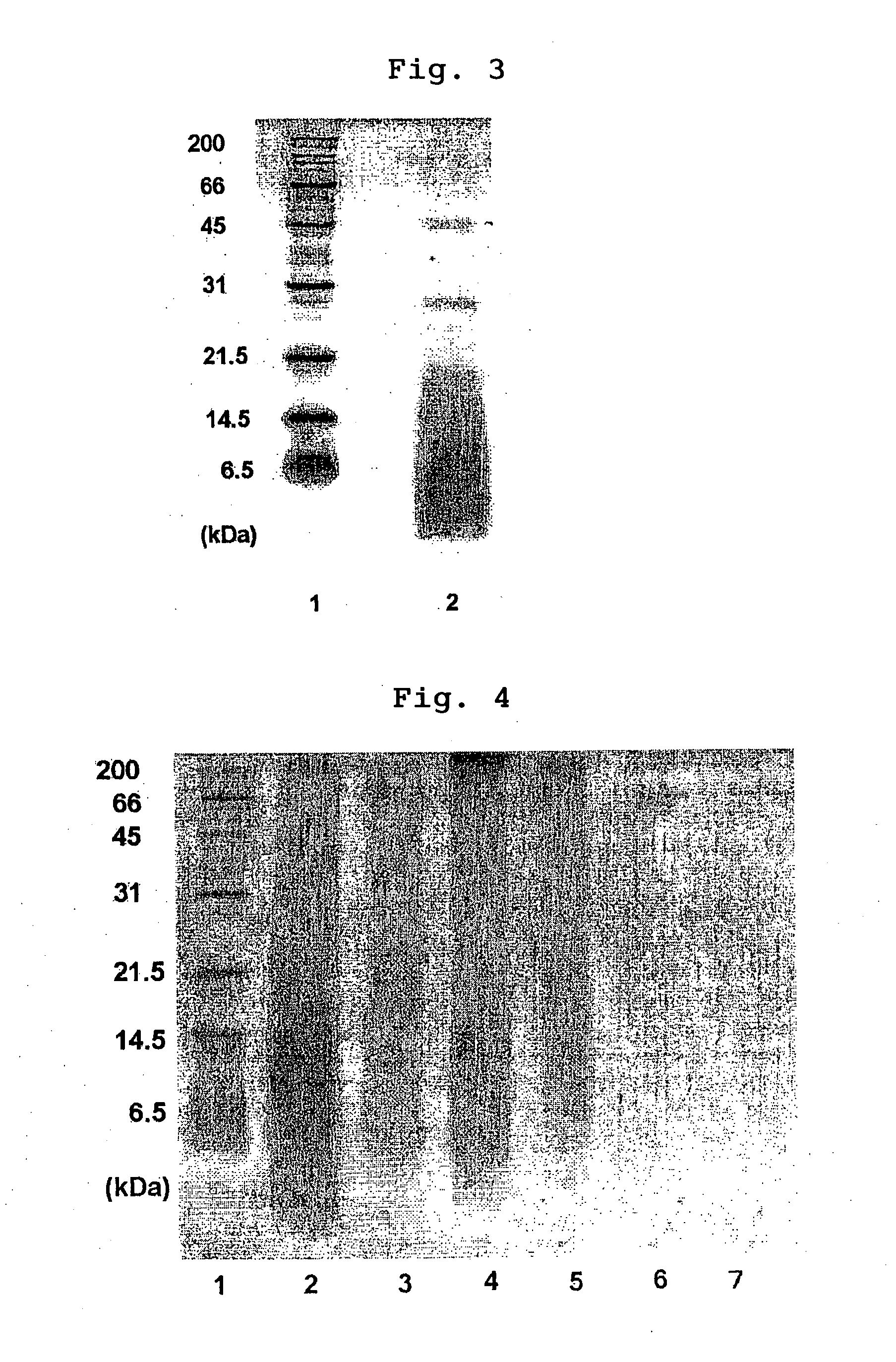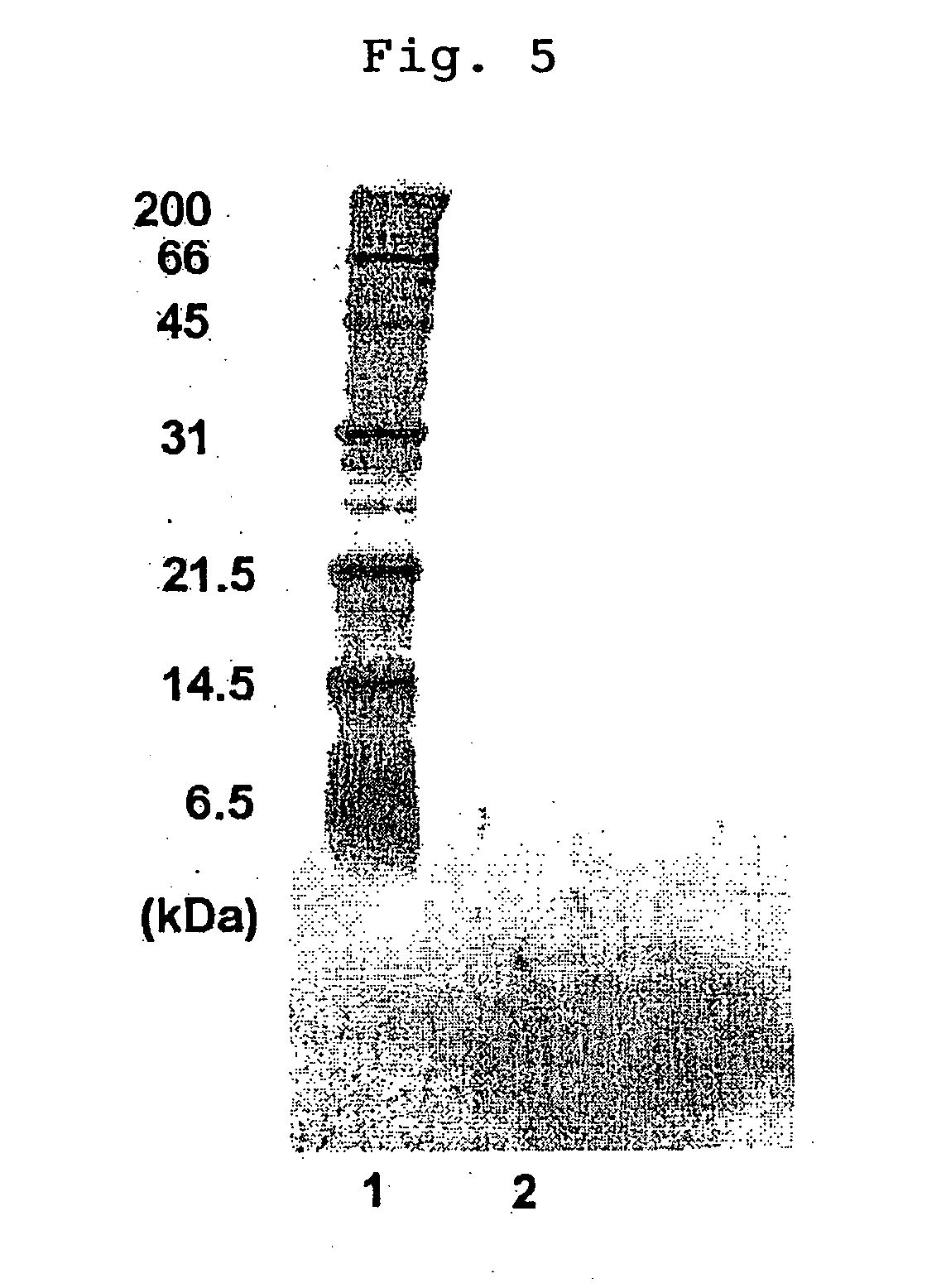Deproteinized natural rubber, its composition and use thereof
a natural rubber and deproteinized technology, applied in the field of de, can solve the problems of not being able to be free from type i allergic reactions, requiring troublesome and expensive treatment, and no finding to prove the formation of rubber
- Summary
- Abstract
- Description
- Claims
- Application Information
AI Technical Summary
Benefits of technology
Problems solved by technology
Method used
Image
Examples
example 1
[0060] To 1.9 L of fresh latex (abbreviated as FL-latex) adjusted to a DRC (Dry Rubber Content) of 30%, aqueous solution of NaOH containing 30 g of NaOH in 100 mL water and 4 g of Triton X-100 (isooctylphenoxypoly-ethoxyethanol, BDH Laboratories Suppliers, Co.) as a nonionic surfactant were added, and the saponification reaction was carried out at 70° C. for 3 hours. To the resulting latex, 300 mL of 0.025% (w / v) Floerger as an anionic polymer flocculant was added. Then, 1.5 L of 5% (w / v) formic acid was added so as to coagulate the rubber, which was then washed with water and dried at 50° C. for 2 days. The obtained saponified natural rubber (abbreviated as SAP-NR-1) had the nitrogen content of 0.133%. About 5 g of this rubber was pressed into a sheet having a size of 5 cm×5 cm and a thickness of 0.2 to 0.3 mm. This coagulated rubber was cut into a slit (2 mm×10 mm×1 mm) and then extracted twice by use of 2% (w / v) aqueous SDS (Sodium Dodecyl Sulfate) 10 mL with stirring at room tem...
example 2
[0064] After saponification and coagulation in the same manner as in Example 1, the resulting natural rubber was immersed in a 3% (w / v) NaOH aqueous solution at 70° C. for 1.5 hours followed by washing with water and drying under the same conditions as used in Example 1. The nitrogen content of the obtained rubber (SAP-NR-1-1) was very low at 0.025%. The result of SDS-PAGE analysis made under the same conditions as used in Example 1 is shown in FIG. 2. As it is expected in this case as well, it was revealed that the rubber contained no protein showing bands of 14, 31 and 45 kDa as measured by SDS-PAGE.
examples 3 to 8
[0067] Experiments were conducted under the same conditions as used in Example 1. The conditions for saponification are shown in Table 1.
TABLE 1Nitrogen Content ofObtained RubberConditions for Saponification(w / w %)Ex. 3NaOH 1% / Room Temperature / 1 Hour0.336Ex. 4NaOH 1% / 70° C. / 1 Hour0.133Ex. 5NaOH 2% / Room Temperature / 5 Hours0.147Ex. 6NaOH 2% / Room Temperature / 25 Hours0.080Ex. 7NaOH 3% / 70° C. / 1 Hour0.100Ex. 8NaOH 3% / 70° C. / 5 Hours0.119
Ex. = Example
Note:
The conditions for saponification indicate the concentration of NaOH, reaction temperature, and reaction time.
[0068] The results of measurements made on the obtained rubbers by SDS-PAGE under the same conditions as used in Example 1 are shown in FIG. 4. In FIG. 4, Lane 1 denotes standard molecular weight markers, and Lanes 2 to 7 corresponds to Examples 3 to 8, respectively. According to the results of the measurements by SDS-PAGE, under the conditions (NaOH 1% (w / v), room temperature, 1 hour) of Example 3, a protein band of around 14...
PUM
| Property | Measurement | Unit |
|---|---|---|
| Percent by mass | aaaaa | aaaaa |
| Pressure | aaaaa | aaaaa |
| Atomic weight | aaaaa | aaaaa |
Abstract
Description
Claims
Application Information
 Login to View More
Login to View More - R&D
- Intellectual Property
- Life Sciences
- Materials
- Tech Scout
- Unparalleled Data Quality
- Higher Quality Content
- 60% Fewer Hallucinations
Browse by: Latest US Patents, China's latest patents, Technical Efficacy Thesaurus, Application Domain, Technology Topic, Popular Technical Reports.
© 2025 PatSnap. All rights reserved.Legal|Privacy policy|Modern Slavery Act Transparency Statement|Sitemap|About US| Contact US: help@patsnap.com



